- Quick Read
- Deep Read ( 13 Min. )
In Today’s Issue
- Innocence detectives: The exonerated men who now work to free others
- Israel, South Africa, and the ‘deal of the century’
- How Virginia became ground zero in America’s gun debate
- First a trade war. Now coronavirus. The roller coaster life of a US farmer.
- Forget the roses. Say ‘I love you’ with a book of love poems.
Monitor Daily Podcast
- Follow us:
- Apple Podcasts
- Spotify
- RSS Feed
- Download
TODAY’S INTRO
What it takes to be a great president
Today’s stories include a tale of justice deferred, lessons for the pursuit of peace, a challenge to Virginia’s gun culture, a window into farmers’ uncertainties, and another way to say “I love you.”
What makes a good president? Two words: emotional intelligence.
That was the opinion of renowned presidential scholar Fred Greenstein, in any case. I reread his famous thoughts on the personal qualities that determine presidential performance this week when researching an upcoming Presidents Day piece.
Dr. Greenstein taught politics at Princeton for 30 years. His research helped rejuvenate President Dwight Eisenhower’s reputation, among other things.
Another of his life’s work was intriguing: poring over White House memos and other documents to evaluate presidents on their effectiveness as leaders.
His conclusion was a shortlist of talents he believed the most effective U.S. chief executives shared. The best presidents were effective public communicators, he decided. They had superior organizational capacity and political skills. They had vision. Their cognitive styles reflected strategic thinking, though different presidents were smart in different ways.
But emotional intelligence was the most important item on his attribute list, wrote Dr. Greenstein. By that, he meant “the president’s ability to manage his emotions and turn them to constructive purposes, rather than being dominated by them.”
Richard Nixon and Bill Clinton were among the presidents whose lack of emotional intelligence handicapped them, according to Dr. Greenstein. As to the current occupant of the Oval Office, Dr. Greenstein died in 2018, and thus saw only the beginning of President Donald Trump’s term. But according to a colleague, he did say that to a scholar of leadership, the Trump presidency was fascinating.
Why? “Because it’s so different from anything else,” he reportedly said.
Share this article
Link copied.

Help fund Monitor journalism for $11/ month
Already a subscriber? Login

Monitor journalism changes lives because we open that too-small box that most people think they live in. We believe news can and should expand a sense of identity and possibility beyond narrow conventional expectations.
Our work isn't possible without your support.
A deeper look
Innocence detectives: The exonerated men who now work to free others
Christopher Scott and Steven Phillips, two men who were wrongly imprisoned, don’t spend their days railing against the justice system. They are helping others who may have been falsely convicted.
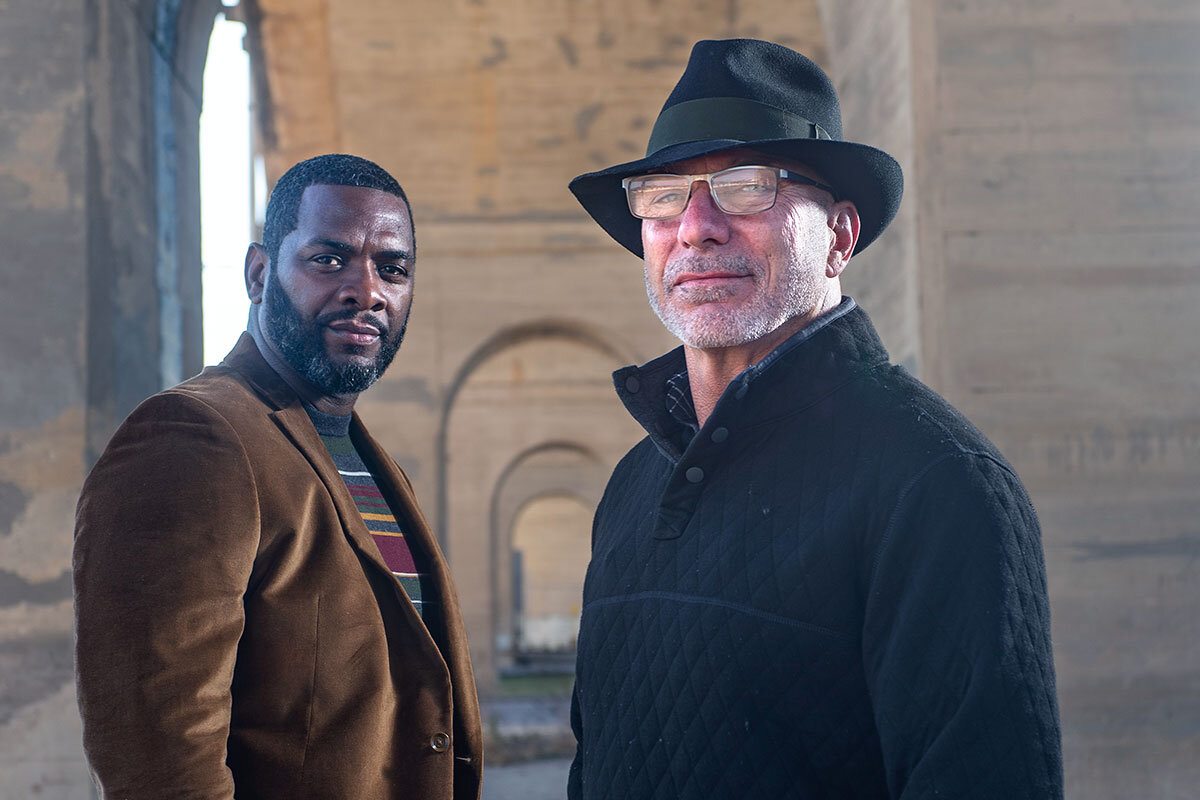
There’s a lot of waiting and a lot of failure in this line of work. It starts with emptying a North Texas P.O. box full of mail from prisons across the country. And for the letter writers who persuade Christopher Scott and Steven Phillips to take their cases, the hope is that it ends with a wrongfully convicted person walking free.
The reason they do this work is simple: Mr. Scott and Mr. Phillips spent a combined 37 years in prison for crimes for which they were eventually exonerated. That’s why they read every letter they receive.
It is the tantalizing prospect of uncovering new information that might free other innocent men that drives them. They visit clients in prison and track down potential eyewitnesses. They meet with prosecutors and lawyers. Their Dallas-based nonprofit, House of Renewed Hope, also campaigns for criminal justice reforms and raises awareness about how the system often fails.
Criminal convictions are purposefully difficult to overturn, and especially difficult when there’s no DNA evidence. The procedural barriers just to reopen a case are almost endless.
“So what is it that we do?” says Mr. Phillips. “We deal in the commodity of hope. Don’t quit. Don’t stop. Keep the hope alive.”
Innocence detectives: The exonerated men who now work to free others
The busiest P.O. box in North Texas may be in a drab, beige hallway in the post office of this Dallas suburb. Box 2075 is not stuffed with grocery coupons or credit-card promotions. It’s full of letters, mostly handwritten and postmarked from prisons across the country, addressed to what may be the most unusual detective agency in America.
This agency doesn’t have an office with a frosted glass window. Nor do the detectives snoop on cheating spouses or deadbeat debtors. The letters that pile up are from prisoners or their family members, pleading for help in overturning criminal convictions. All say they were wrongfully imprisoned.
The man who empties the box is Christopher Scott. Broad-shouldered and barrel-chested, he dresses sharp, talks in the gritty patois of the South Dallas neighborhood he grew up in, and uses his bright smile sparingly.
Under normal circumstances, he probably wouldn’t know Steven Phillips, and they most likely wouldn’t be best friends or partners in a detective agency. They’re from different backgrounds and different generations. While Mr. Scott navigated urban streets as a youth, Mr. Phillips grew up in the country, in the Ozarks, and has the drawl to prove it. He takes his wardrobe and most other things less seriously than Mr. Scott. A lifetime of fistfights has cost Mr. Phillips several teeth, but he cracks jokes and smiles energetically, and often. Mr. Phillips is older, as evident from his salt-and-pepper stubble, but it is Mr. Scott who is the grandfather.
Yet for all their differences, these two men – one white and one African American – have forged a common bond around a common purpose: trying to get people out of prison who should never have been there in the first place. Their Dallas-based nonprofit, House of Renewed Hope, also campaigns for criminal justice reforms and raises public awareness about how the system often fails.
But it is the tantalizing prospect of uncovering new information that might, just might, free other innocent men that drives Mr. Scott and Mr. Phillips the most. They spend their days meeting clients in prison, tracking down and interviewing family members, friends, and potential eyewitnesses. They meet with prosecutors and activists, lawyers and experts.
There’s a lot of waiting, too. Waiting for court rulings, for district attorneys to reply, for inmates to write back. And there’s a lot of failure, the cases that don’t crack, however much you want them to.
Criminal convictions are purposefully difficult to overturn, and especially difficult when there’s no DNA evidence to present to a judge. The procedural barriers just to reopen a case are almost endless. “It’s harder now to get somebody exonerated than ever, man,” says Mr. Scott.
He should know. As should his partner.
The reason Mr. Scott and Mr. Phillips do this work is simple: The two men spent a combined 37 years in prison for crimes they didn’t commit, crimes for which they were eventually exonerated. That’s why they read every letter they receive. They know there are others like them behind bars. Others desperate for someone to help prove their innocence.
“We couldn’t begin to investigate all the cases we get sent to the mailbox, man,” says Mr. Phillips. “So what is it that we do? We deal in the commodity of hope. Don’t quit. Don’t stop. Keep the hope alive.”
“Not too scared”
It’s a cold, wet October day in Dallas – 10 years to the day since Mr. Scott became a free man. He has the same bulky build as when he left prison, and he’s dressed as sharply as he was before he went in. But his neatly trimmed beard is flecked with gray and white.
“We was wronged,” he says. “If you don’t want to see this happen to a lot of other people, there’s things that we can do, because we’ve been a part of that system before.”
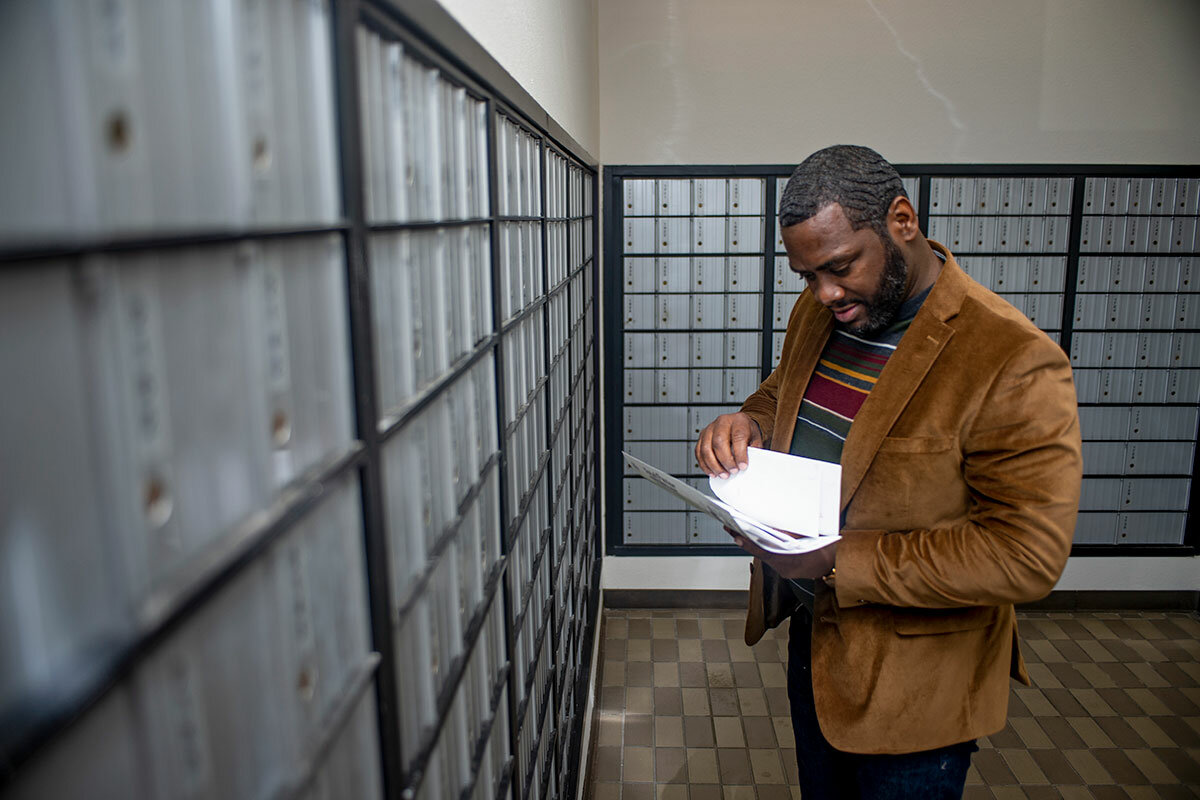
Raised by a single mother, and the youngest of nine siblings, Mr. Scott learned responsibility early on. He got his first job at age 17 at a burger joint. Within a few years, he was a produce manager in a grocery store, raising two kids and driving a Lexus.
One April night in 1997 he was riding around his neighborhood with a friend, Claude Simmons. On their way home, he noticed a heavy police presence in the area and a helicopter flying overhead. A familiar nervousness crept in. Hours later Mr. Scott and Mr. Simmons were arrested along with dozens of other African American men who fit the descriptions of two suspects in a nearby homicide.
He was handcuffed and taken to a police station downtown, but he knew he hadn’t done anything wrong. “So I’m scared, but I’m not too scared,” he recalls. “In my head I’m thinking the law, the justice system, is going to get it together and figure it out.”
Instead, he was identified by the wife of the slain man as one of the attackers. She had been sexually assaulted and her husband shot dead during a home invasion.
No physical evidence linked him to the crime, and her testimony was crucial in convicting Mr. Scott in a trial that lasted only four hours. An all-white jury sentenced him to life in prison. (Mr. Simmons was tried separately and convicted for the same crime.) Mr. Scott was 27 years old, weighed just 130 pounds, and was headed to Coffield, a notorious state prison.
Life sentence
Routine is key to surviving and finding purpose in prison, and he soon found his. He labored in the prison fields and worked out in the yard, putting on 100 pounds of muscle. He read three books a week, including law tomes, looking for ways to prove his innocence. He compared notes and exchanged tips with other guys in Coffield filing innocence claims in courts.
His break came when a group of law students at the University of Texas at Arlington discovered that two other men, one of whom was in prison for aggravated robbery, had committed the murder for which Mr. Scott had been convicted. The prisoner confessed, and in 2009 his accomplice was arrested in Houston.
After Mr. Scott passed a six-hour polygraph test, he was exonerated; Mr. Simmons was also exonerated. The two men were brought before a judge in Dallas and declared innocent.
“I couldn’t do nothing but shake my head,” Mr. Scott says. “I was like, ‘Dude, I asked for this 13 years ago, and they didn’t give it to me.’
“But I was happy. I knew I was going free. It was over.”
When Mr. Scott got out, Mr. Phillips was waiting for him. He was in the courtroom for the exoneration hearing. Afterward he introduced himself and told him to call if he ever needed anything. Mr. Scott was wary at first – with everything he’d been through, he says, he didn’t trust white people – but after a few days living with his mother he did call.
Mr. Phillips let him stay at an apartment he owned, lent him some money, and even bought him a cheap car.
Advocacy and tenacity
A year later, after going to regular meetings with other exonerees, Mr. Scott set up the House of Renewed Hope using some of his compensation money from the state. (Texas awards exonerees $80,000 for every year they were wrongly imprisoned, as well as monthly annuity payments if they’re eligible.) That compensation, along with some donations and payments to Mr. Scott for speaking engagements, fund the group. He asked Mr. Phillips and Johnnie Lindsey, another exoneree, to be co-founders.
Mr. Lindsey died in 2018, but today eight employees – a mix of paid staff, including a lawyer, and volunteers – keep the organization running. Together they have built an agency that is respected, both for its advocacy work and its tenacity in investigating cold cases, by others who have a stake in the criminal justice reform movement in Texas.
“To have gone through what he went through and still be able to come out and say, ‘I’m going to help somebody else who might be in the situation I was in,’ is admirable,” says Cynthia Garza, head of the Dallas County district attorney’s conviction integrity unit. Her first case after joining the unit was Mr. Scott’s exoneration. He and Mr. Phillips, she says, “have a different perspective that they bring to these cases.”
Both bring their own talents and experiences to the enterprise. Mr. Scott is the president, public face, and driving force behind the group. But it’s Mr. Phillips who has a facility with the law and knows how to prepare a writ. He honed his legal skills in the same place Mr. Scott did: the Coffield prison law library. And like Mr. Scott, miscarriages of justice took him there.
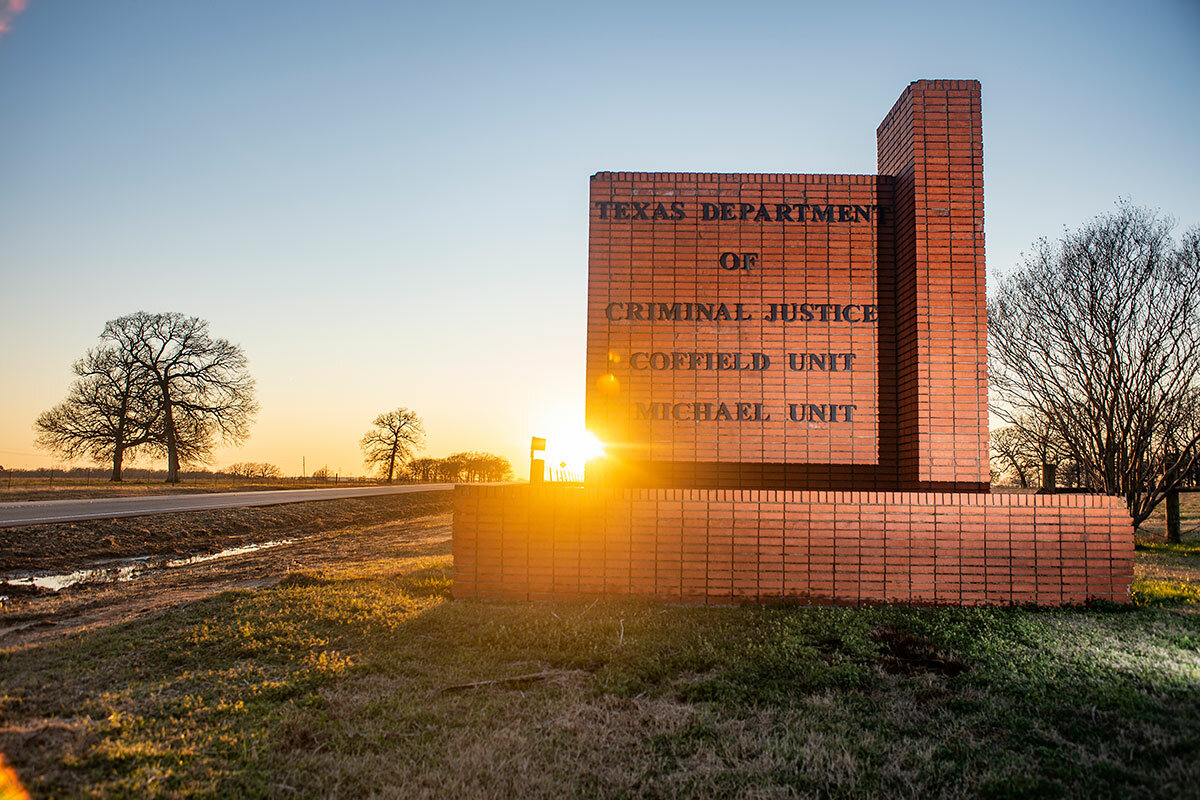
He was working as a roofer in Dallas in 1982 when a woman reported an armed man had broken into her apartment and raped her, one of a string of sex crimes committed in the area. She later identified Mr. Phillips as her assailant, as did other victims.
He had an alibi for that day, and there was no physical evidence tying him to the assault. But he was convicted of rape and burglary in two separate trials and sentenced to concurrent 30-year sentences.
Law library reading
Like Mr. Scott, Mr. Phillips was sent first to Coffield. As a teen in Arkansas, before he enlisted in the U.S. Army and served in Germany, he had learned to box, and his left jab-right hook combo helped protect him within the Darwinian walls of prison. He made the prison basketball and softball teams. But mostly he hit the books in the law library, filing all the post-conviction motions he could, to no avail.
His case appeared hopeless. Every day he prayed, asking God to help him show that he was innocent. Years later his prayer changed. If God wanted him exonerated, God was going to have to do it. Mr. Phillips shoved his typewriter under his bunk and resolved to never file another motion.
Then everything changed.
In 2006, the Innocence Project in New York took up his case and secured evidence that proved his innocence. The Dallas County district attorney linked DNA from the crime scene to a felon who had died in prison in 1998 after being convicted of 16 other sexual assaults and related crimes, and cleared Mr. Phillips of all charges. On Oct. 1, 2008, he was a free man again.
“Faith carried me all the way – until science took over,” he says.
Transformation of DNA
Science, he thinks – DNA testing in particular – has transformed criminal justice in the United States. It’s “a little disagreement” he has with Mr. Scott, who still harbors a deep mistrust of the system.
“I say the system is better now than it was 20 or 25 years ago,” Mr. Phillips says. “It’s not perfect at all, but the science is improving, and the science is holding [people] to at least try for a more perfect system.”
Indeed, DNA science has been pivotal in exploding the long-held myth that wrongful convictions are rare. The first man to be exonerated by DNA evidence was Gary Dotson in 1989. Since then, more than 2,500 people have been exonerated in what has become known as the innocence movement.
Still, for every release of a wrongfully imprisoned person, many others may remain behind bars because there’s not enough evidence to persuade authorities to reopen their cases, experts say. “It takes a tremendous amount of evidence, legal work, and just plain luck to be able to exonerate someone,” says Keith Findley, an associate professor at the University of Wisconsin Law School and co-founder of the Wisconsin Innocence Project.
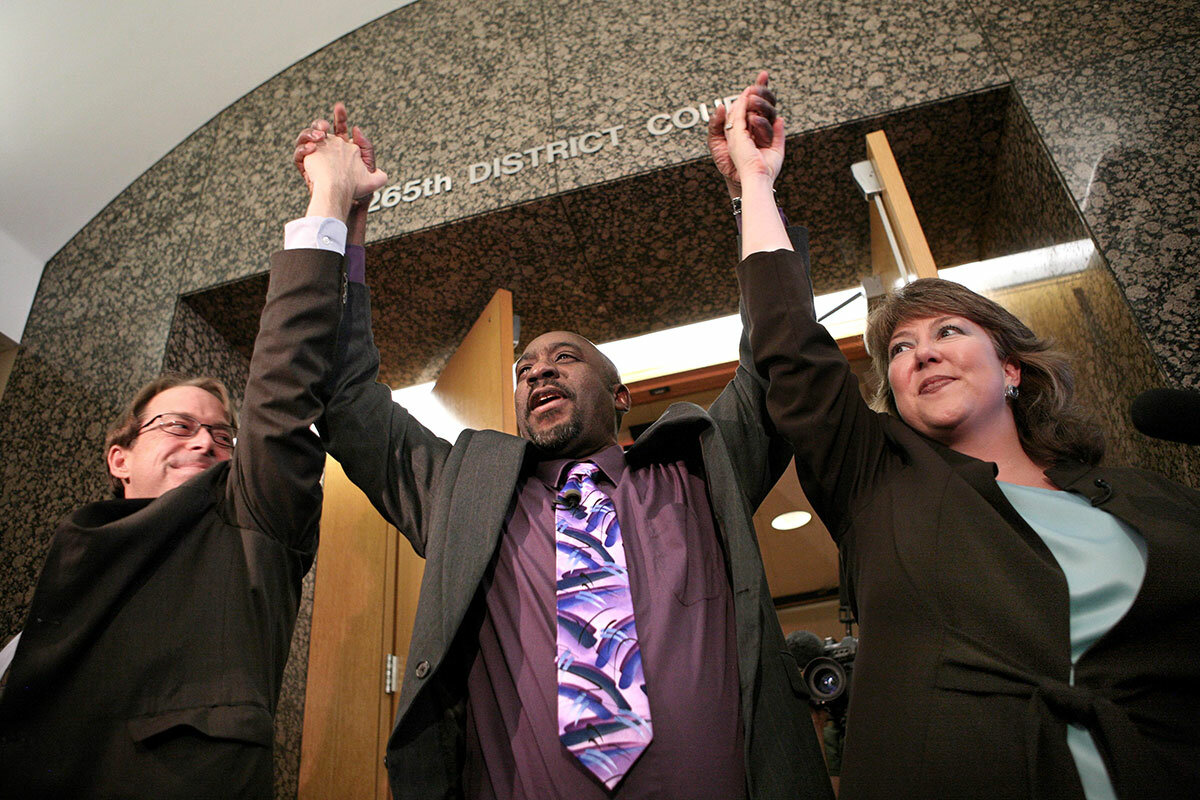
He and other legal experts believe that the justice system’s reliance on DNA – the science that spelled salvation for Mr. Phillips and launched the innocence movement – has now become a handicap. DNA tests provide an ironclad proof of innocence. But most cases don’t have any biological evidence to test, and ironclad proof has become almost mandatory.
When Mr. Phillips brings a case to a district attorney, he says, the first question is usually, “Is there DNA?” “If there’s not DNA, and just, [say], some question of misidentification involved, they may not [reopen] that case,” he says.
A hierarchy of innocence now exists, says Daniel Medwed, a professor at Northeastern University School of Law in Boston. “It’s made it harder to prevail in non-DNA cases.”
Absent DNA, Mr. Phillips and Mr. Scott need to uncover other physical evidence that was overlooked or unlawfully suppressed that could have changed the jury’s decision. They need to unearth new eyewitnesses or, better yet, a confession from another suspect. Even then, claims of “actual innocence” – the legal standard for exoneration – in Texas have to be approved first by a trial court judge and then by the Texas Court of Criminal Appeals.
“Texas is very challenging in that regard, but it’s also a blessing,” says Ms. Garza. You “don’t water down what actual innocence means. You can’t hand [exonerations] out like candy.”
“The bar is so high”
While there are likely a lot of innocent people in prison who can’t find enough evidence to prove it in court, there are also a lot of people making frivolous post-conviction appeals. It’s in this area that Coffield has given Mr. Scott a sixth sense of who is believable.
“In prison you automatically become an investigator,” he says. “In a 5,000-man unit, I heard different stories every day. So my thing was [to] break it down and make sense of what I think they’re telling me.”
Even the strong cases are time-consuming and tedious. House of Renewed Hope is working on a half-dozen cases at any one time, but in nine years it has only come close to helping to exonerate a few clients. In one case, the investigators tracked down a man who admitted to committing a robbery for which their client, Isaiah Hill, had been convicted, but the man refused to testify formally. Mr. Hill was released on parole in 2016 after 40 years in prison.
Mr. Phillips is sure of his innocence, but knows that an exoneration – and the compensation money that Mr. Hill is desperate for – is out of reach. “The bar is so high. You have to have overwhelming evidence in your favor to get back in court. ... He didn’t reach that bar, and that’s just unfortunate,” he says.
Given all the difficulties, the mix of prison-yard smarts and investigative grit that Mr. Scott and Mr. Phillips bring to a case can be a boon to lawyers working on potential exonerations.
“Ultimately [exonerations] come down to good lawyers doing good work,” says Mike Ware, executive director of the Innocence Project of Texas. “But I think what good lawyers doing good work need is sometimes the raw tools and raw information to work with, and I think sometimes exonerees can help with those raw tools and raw information.”
Changing the system
Working for House of Renewed Hope, though, means pursuing more than just exonerations. It also means trying to prevent wrongful convictions in the first place.
On that rainy day last October, Mr. Scott drives to Friendship-West Baptist Church in South Dallas to join a panel discussion on issues facing African American men. A small audience sits in the front pews of the cavernous church, greeting friends and shaking off rain-soaked umbrellas.
It’s just weeks after former Dallas police officer Amber Guyger was convicted of murdering Botham Jean, a young black man, while off duty, and the first question, perhaps unsurprisingly, is about police brutality and the fairness of the criminal justice system. Daryl Washington, a prominent local lawyer who represented the Jean family, talks about the importance of involving the black community in all aspects of law enforcement and the court system. Without five black jurors, he says, Ms. Guyger would have walked.
Mr. Scott picks up his cue. “I had an all-white jury, judge, prosecutor, and defense attorney,” he tells the audience. “We’ve got to vote for change. We’ve got to get the right people in office” as judges and prosecutors.
House of Renewed Hope staff rarely all meet together, instead working out of their own homes or offices. This flexibility leaves time for personal commitments, which for people who spent years locked away from their families are very important.
The next day Mr. Scott picks up his grandson from school to take him to a barber shop for his weekly haircut. In prison, he missed most of his two sons’ school years, and he is now a doting grandfather. The 6-year-old, who was nodding off in the car, falls asleep in the barber’s chair, so Mr. Scott holds his head up while talking sports with the room. “Every Friday I’m holding his head up,” he says, smiling.
It’s more than his grandson’s head that he’s holding up. He’s holding up the hopes of every person who sends a letter to P.O. Box 2075.
He’s getting close with one case. House of Renewed Hope has teamed up with the Innocence Project of Texas to try to exonerate Leslie Davis, a man who served 28 years in prison for aggravated robbery. His conviction was based largely off testimony from a Dallas police officer who claimed he’d eavesdropped on Mr. Davis confessing to the crime while hiding in some bushes.
Some other Dallas officers gave similar testimony around that time in the early- and mid-90s, earning the nickname the “Bushmen” with some county prosecutors, and it later came to light that several of them had been disciplined internally for dishonesty.
“That’s something that should have been disclosed to the defense and was not,” says Mr. Ware of the Innocence Project of Texas.
Mr. Davis was released on parole several months ago, but he is still trying to clear his name. “It’s close,” says Mr. Scott. “We just need a little more information.”
Until then, Mr. Davis must wait, and wait. That’s something that exonerees know only too well, that feeling of being stuck, of a stolen life fading away.
“I can relate to that,” says Mr. Phillips. “And I’d like to help them if I can.”
Editors note: This story was clarified on March 3 to more accurately reflect House of Renewed Hope's previous cases.

Patterns
Israel, South Africa, and the ‘deal of the century’
South Africa in the 1980s may offer lessons for Israel today. Progress ultimately came not from the establishment's superior power or economic leverage, but from a shift in thought within it.

- Quick Read
- Deep Read ( 5 Min. )
Israel may not be the “apartheid state” that its most vocal critics claim. But there are illuminating parallels between South Africa in the 1980s, before Nelson Mandela became president, and Israel’s conflict with the Palestinians today.
Black South Africans then and Palestinians now faced a huge power deficit; neither could really threaten the governments they challenged. The economic disparities too were enormous; the white South African government then, and President Donald Trump now, with his new Middle East peace plan, offered huge amounts of cash as inducements to go along.
But power and patronage have their limits. In South Africa, in the end, F.W. de Klerk’s government changed course, abandoned apartheid, and paved the way for Mr. Mandela and black majority rule.
In Israel, and the West Bank lands that its army and settlers have occupied since 1967, there are no signs of a change of course. Mr. Trump’s so called “deal of the century” has met with blunt, out of hand rejection by the Palestinians, its $50 billion sweetener notwithstanding.
Mr. de Klerk’s move resolved one decadeslong conflict. Mr. Trump’s plan may prolong another.
Israel, South Africa, and the ‘deal of the century’
It is a bit like déjà vu, but through the looking glass.
More than three decades ago, as the Monitor’s recently arrived South Africa correspondent, I explained the obstacles facing the apartheid government’s vaunted hopes for a power-sharing deal with the country’s black majority by citing the cautionary lessons of the Israeli-Palestinian conflict.
Now, however, it’s the lessons of South Africa that may shed light on prospects for the “deal of the century” that President Donald Trump has proposed to Israel and the Palestinians.
The two conflicts, historically and politically, are very different. Despite the accusations of the Israelis’ most vocal international critics, Israel is not an “apartheid state.” At least not yet.
But there are parallels, important to understanding South Africa’s conflict back in the late 1980s, and important to Israel’s conflict with the Palestinians today.
Power and money ...
Parallel No. 1: a huge disparity of power.
Even at the height of anti-apartheid violence in the black townships, South Africa’s government, army, and police never faced a serious threat to their control. Except in numbers – a 3-1 advantage over their white rulers – black South Africans were in a wholly one-sided struggle. Their most powerful political leader, Nelson Mandela, had been in jail for decades. His African National Congress was banned.
Palestinians have, at times, threatened the security of Israeli civilians on a scale never experienced by white South Africans, notably through suicide bombings and other acts of violence during the intifada that began in 2000. But Israel’s “separation” barrier has all but ended such attacks, and in any case the violence has never threatened Israel’s occupation of the West Bank, let alone the stability of the Israeli state.
Meanwhile, the Palestinian political leadership has never been weaker.
Parallel No. 2: an equally enormous disparity in economic leverage.
Key to the South African government’s grand scheme for negotiating its way out of its impasse with the black majority was the promise of economic benefits if black South Africans went along: a major boost to spending on black housing, education, and jobs.
Mr. Trump’s Middle East plan is promising even greater sums: the prospect of $50 billion of new investment in Palestinian areas and other Arab economies.
... have their limits
But another parallel will almost certainly matter more: the limits to power and patronage, however overwhelming.
In South Africa, the very powerlessness of black people led most of them, at least in the urban townships, to figure that either they had nothing to lose by turning to violence, or nothing much to gain by embracing political or economic compromise. In some cases, they were motivated by political commitment. In others, by rational calculation. For many it was a simple matter of self-worth.
Hardly any felt even the bare minimum of mutual trust it would have taken to engage meaningfully with the authorities.
The same is true of West Bank and Gaza Palestinians presented with the Trump administration’s deal, which their leaders have rejected out of hand. In fact, they may have even less incentive to engage. The future mapped out for them envisages limited Palestinian control over 70% or so of the West Bank, with none at all inside Jerusalem, while Israel would also hold on to the valley land on the border with Jordan.
Twenty years ago, President Bill Clinton presented Palestinian leader Yasser Arafat with a proposal for a Palestinian state on nearly all of the West Bank, as well as sovereignty over parts of the predominantly Arab eastern part of Jerusalem. He rejected it. Few Palestinians see now why they should even consider a far less attractive offer.
The real lesson from South Africa, however, may involve what comes next.
The Trump plan envisages Israeli annexation of 30% of the West Bank. Any eventual Palestinian state on the remaining territory would have to extend formal recognition of Israel as a Jewish state. The plan also leaves open the possibility that Israel’s border with the West Bank might be redrawn, putting hundreds of thousands of Israeli Arab citizens into a Palestinian state.
If that ever happened, it might blur the distinctions between Israel’s conflict with the Palestinians and South African apartheid. The conflict would no longer be between two peoples with competing national narratives and aspirations. It would have been explicitly redefined in religious terms: between a Jewish state and a Palestinian one to which Israel’s non-Jewish, Arab citizens would, in theory, be moved.
If a Palestinian state does not emerge – and Israel remains in control of the whole West Bank – a future Israeli government could face a choice reminiscent of South Africa’s under apartheid: either give Palestinians a vote in Israeli elections, or embed and codify a system under which Palestinians under effective Israeli rule have different, lesser rights.
The power of a fundamental rethink
Israelis are going to the polls in March. The future of the “deal of the century” may depend on the results. And that too suggests a parallel with South Africa.
After Mr. Mandela became president, many argued that it was because of pressure from domestic unrest and international sanctions that the apartheid regime had buckled.
Both played a part, of course. But I vividly remember a conversation with an old friend shortly after Mr. Mandela’s election. Her name was Helen Suzman. She was the leading light among the small band of anti-apartheid activists in South Africa’s whites-only Parliament, and she was a friend of Mr. Mandela as well.
“We shouldn’t kid ourselves,” she said. “The apartheid system wasn’t brought to its knees. The apartheid government could have held on for years if it had wanted to. For decades.”
The key came from inside the establishment: from President F. W. de Klerk, who decided it was time to bring white rule to an end.
No such fundamental rethink seems likely in Israel. The political center of gravity there has shifted rightward in recent years. And while some opposition politicians object to the idea of moving Arab Israelis into a putative Palestinian state, broad support has emerged for unilateral annexation of the main West Bank settlements, even though such a move would be illegal under international law.
In South Africa, the government’s change of course under Mr. de Klerk brought resolution to one decades-old conflict. In the Middle East, President Trump’s deal could prolong another.

How Virginia became ground zero in America’s gun debate
A seismic shift underway in Virginia has lawmakers asking a question once unthinkable for the home of the NRA: How do you ban “America’s gun”?

- Quick Read
- Deep Read ( 6 Min. )
-
Patrik Jonsson Staff writer
How would you react to a plainclothes resident strolling down the street with an AR-15 tossed over his shoulder?
If you are like Laura Kinzinger of Cape Charles, Virginia, you might call the police and then duck, run, and hide. “It might be legal,” she says. “But it’s not normal.”
But if you are like the 22,000 people who gathered in Richmond, Virginia, late last month, openly carrying an assault-style rifle is a form of protest and a reminder of Second Amendment rights. “The pictures that are taken from here ... can live forever and encourage people to remember our rights,” says Jeff Hulbert, a gun-rights advocate from Maryland who attended the rally.
Virginia, a historically gun-friendly Southern state, has become a front line in the battle over gun rights in the United States, as newly elected Democrats move forward with a ban on new sales of assault-style rifles.
“It is an amazing moment,” says Adam Winkler, author of “Gunfight: The Battle Over the Right to Bear Arms in America.” “A lot of people since [the 2012 Sandy Hook massacre] have expressed disappointment that nothing has changed, but we have actually seen a real shift in American gun politics. Virginia is really the crucible of that.”
How Virginia became ground zero in America’s gun debate

As chants of “USA! USA!” poured over him, Jeff Hulbert stood at the ready – a soldier, in his eyes, of democracy. Behind him rose the peak of the Virginia Capitol in the state that has become ground zero in the shifting politics of gun rights across the United States.
On a fence fluttered a “We Will Not Comply” banner. Strapped around his shoulder, an Israeli Tavor rifle, which fires the same ammunition as an AR-15 – a military-style weapon that has become popular as an avatar of armed citizenship on the right and decried as a machine of mass death on the left.
“We think it’s very symbolic to wear our sidearms, to wear a rifle, because the pictures that are taken from here ... can live forever and encourage people to remember our rights,” says Mr. Hulbert, a Maryland resident and founder of Patriot Picket, a gun-rights advocacy group.
But Cape Charles resident Laura Kinzinger has an opposite reaction. If she saw someone openly carrying a long rifle, she says she’d call the police and then duck, run, and hide.
“It might be legal. But it’s not normal,” she says. “That person might suddenly use it. I mean, there could be accidents. The thought of walking around with an [assault-style] rifle is just horrific. They are designed to kill people. That’s what they do.”
As complaints of government overreach still echo from the 22,000-strong show of largely armed force in Richmond late last month, newly elected Democrats are moving forward with a ban on new sales of the assault-style rifles, including misdemeanor penalties for possession of magazines that hold more than seven rounds.
The turn of a historically gun-friendly Southern state toward gun restrictions comes as the U.S. Supreme Court takes its first gun rights case in a decade to determine how far municipalities can go to restrict guns. Given that a conservative majority is unlikely to OK broad new restraints, battles at the state level have come to define an epic shift for Second Amendment reformers.
“It is an amazing moment,” says Adam Winkler, a law professor at the University of California, Los Angeles, and author of “Gunfight: The Battle Over the Right to Bear Arms in America.” “A lot of people since [the 2012 Sandy Hook massacre] have expressed disappointment that nothing has changed, but we have actually seen a real shift in American gun politics. Virginia is really the crucible of that.”
On Monday, the House of Delegates advanced the assault-style ban to its final reading, with Democratic lawmakers contending that it will not infringe on anybody’s Second Amendment rights. Republicans argue otherwise, saying it would criminalize ownership of some magazines, even after Democrats tempered penalties to a misdemeanor. At one point, police escorted protesters out of the chamber. “Whose side are you on?” they shouted at officers.
But the political fight between blue suburbs and red rural areas over the proposed ban has also bared tensions among gun owners themselves. Does open carry, as Mr. Hulbert hopes, normalize the image of an armed citizenry? Or does it further entrench the idea that the right to carry a long rifle infringes on the freedoms of non-gun owners?
Williamsburg, Virginia, resident Josiah Gray says open carry should be restricted to police officers. The parking officer says carrying a gun might make some people feel safer, but others could be intimidated or possibly traumatized, especially if they lost someone they knew to gun violence.
“You never know how it affects other people,” he says. “If you don’t have a uniform, it looks kind of off to the other people that you have a gun.”
Some gun owners share those doubts. Few gun owners question the right, but many ask about the “pragmatic aspect of open carry,” says Wake Forest University sociologist David Yamane, founder of the Gun Culture 2.0 blog. “There are many people in the gun community who really dislike open carry as a method of normalizing firearms.”
In essence, an open source platform that has sold more than 8 million exemplars on its journey to become “America’s Gun,” the Armalite Rifle, gun owners say, is basically a slick-looking single-fire rifle. Mechanically and caliber-wise, that is correct. But it is also a masterpiece of war. Its military cousin was a replacement for the unreliable M-14; its ability to kill Viet Cong in tight quarters stunned Army researchers.
The AR was first introduced to the civilian population as a hunting rifle, and its advertising slogan belies its appeal: If it is good enough for the military, it is good enough for all of us. The sunsetting of the federal assault weapons ban in 2004 opened an era of gun rights expansion, where three-quarters of states have now loosened regulations on concealed and open carry, and have expanded the rights of lethal self defense.
But that arc has been complicated by the gun’s use in a growing number of mass killings, as well as the rise of violent far-right nationalism, members of which law enforcement said posed credible threats as they sought to infiltrate the Richmond rally.
As a result, some of the states that led the expansion of gun rights – like Florida – are tapping the brakes. Gun control advocates like Everytown for Gun Safety, which is backed by Democratic presidential hopeful Michael Bloomberg, are building on success in turning Virginia blue by spending $60 million this election cycle to elect reformers in states like North Carolina, Pennsylvania, and Arizona.
“Democrats in Virginia aren’t doing anything different than what they promised to do, what they ran on,” says Ernest McGowen, a political scientist at the University of Richmond.

At the same time, he adds, open carry of AR-15s in protest “is also a statement to the strength of our democracy: [Gun owners] were there about politics, about policies, about working out, how do we reasonably deal with this thing with guns in our country?”
Gallup says 6 in 10 Americans support an assault-style weapons ban. Those poll numbers and the renewed passion of gun-control advocates after the Parkland massacre in Florida, some gun owners say, has hastened a push to normalize the weapons – and their use in place of protest placards.
“I think they wanted to show that carrying weapons, whether it’s open or concealed, is a normal thing that millions of Americans do every day,” says Tom Ferguson, a University of Virginia senior who came to Richmond in January to lobby on behalf of gun rights. “We have just normal people coming in who just care about making their voices heard.”
The symbolism of the AR-15 is apparent to both sides, and it’s unclear whether a ban would reduce gun deaths. Rifle deaths make up about 300 out of 30,000 gun deaths in the U.S. a year, making the toll from handguns far more dramatic.
As Democrats mull gun-control legislation, nearly 100 Virginia counties have declared themselves Second Amendment sanctuaries, where local sheriffs vowed to not enforce laws that, in their estimation, don’t meet constitutional muster. (So far, U.S. courts have allowed assault-style weapon bans.)
“The right has understood that the battle of ideas is terribly important, because people want to feel that they are part of a crusade that is inspired by a philosophically sophisticated ... and morally significant agenda or purpose,” says Colin Bird, a political philosopher at the University of Virginia in Charlottesville.
While the largest share of gun owners are older white men over the age of 40, women and minorities are part of an increasingly diverse gun culture. For Anna-Marie Lewis, who owns a shooting range in Bergen, New York, carrying a gun is both practical and empowering.
At the rally, she is wearing a helmet and carrying a small AR-15 style rifle. “No one walks around like this at all, ever, but we do just to show we can,” says Ms. Lewis. “This is very peaceful. We have no intent of ever using these in this scenario, but it’s just to show that we should be able to ... that it’s our right.”

First a trade war. Now coronavirus. The roller coaster life of a US farmer.
Farmers are known to embody independence, resilience, and often conservatism. Yet as new China-related uncertainty over exports arises, we’re reminded why they also favor government support for agriculture.

- Quick Read
- Deep Read ( 4 Min. )
A common narrative is that last year was a tough one for U.S. farmers due to the effects of a trade war with China, and now markets are normalizing again. But that’s not how soybean and cattle farmer Andy Stickel in Ohio sees it.
Uncertainty is high due to the coronavirus outbreak, a separate swine flu that’s reducing demand for soybeans to feed Chinese pigs, and questions about the size of the rebound in farm sales due to the recent U.S.-China trade deal.
Also, special subsidies meant to shield farmers from the effects of Chinese tariffs are phasing out. This aid from the Trump administration actually overcompensated farmers, according to six separate studies.
Yet farm subsidies reflect a longstanding conservative paradox: While Republicans dislike government aid, they have defended for decades agricultural handouts, which primarily go to rural areas where the party is strongest. And farmers say government assistance has substantive merit.
“We don’t want to continually rely on government support,” says Mr. Stickel. “The constant thoughts were: trade, not aid. [But] we cannot control Mother Nature. [And] we’ve seen more variability over the last few years. ... Protecting our food supply is important.”
First a trade war. Now coronavirus. The roller coaster life of a US farmer.
Sitting at Andy Stickel’s kitchen table, a soggy field neatly framed by the picture window, it seems almost laughable to ask about his farm’s prospects for 2020.
It could be a wet year again, which seriously delayed planting in 2019, or a dry one. Growing conditions in Brazil or Argentina could send prices soaring or plunging. The new trade deal with Beijing might lead to $40 billion of new sales of U.S. agricultural products – or not, given the sudden appearance of the coronavirus, which is disrupting imports into China.
About the only thing that is clear is that the common narrative surrounding American agriculture and trade is wrong. It turns out farmers were not devastated by last year’s tariffs by China on grain and other products. In fact, studies suggest that overall they did better, reaping more in subsidies than they lost in sales.
Instead, it’s this year that looks wildly uncertain, even with a trade deal with Beijing in place.
“The trade deal? It was welcome, don’t get me wrong. It was a weight off the shoulders,” says Mr. Stickel, who raises cattle, soybeans, corn, and other crops here in northwest Ohio. But the outlook for 2020 remains as cloudy as the weather outside: “2019 could potentially be better than 2020,” he adds.
The reason involves politics, bureaucracy, and a longstanding conservative paradox: While Republicans dislike government subsidies, they have defended for decades agricultural handouts, which primarily go to rural areas in red states, where the GOP is strongest. Democrats generally have gone along because farm bills also provide money for food stamp recipients, many of whom live in Democratically controlled urban areas.
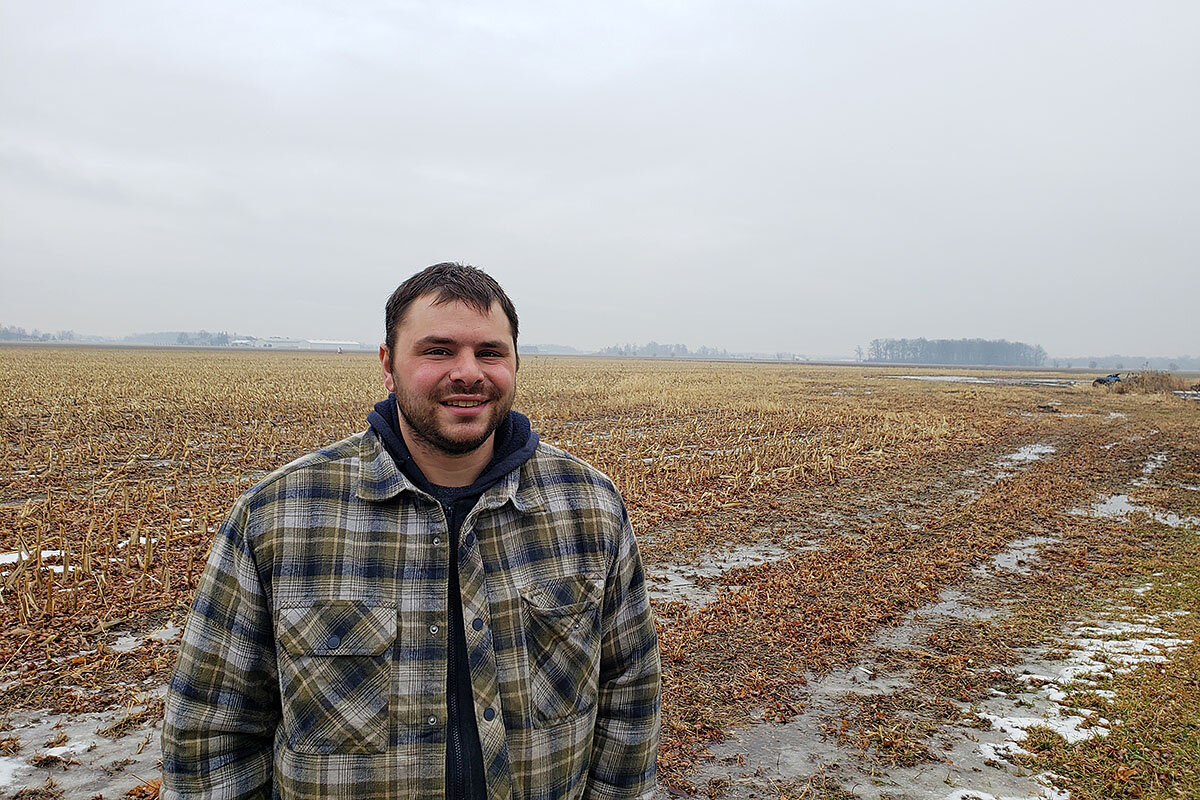
The Trump administration has run roughshod over this tacit bipartisan agreement in Congress. It is moving forward on the first of three proposals that in all would cut about 10% of the 36 million people now helped by the federal Supplemental Nutrition Assistance Program, or SNAP. At the same time, it pushed through a $28 billion subsidy program to shield farmers from the plunge in sales after China imposed farm-good tariffs in the middle of the trade war. And the administration did it by circumventing Congress, using an obscure rule that it said allowed the White House to implement its program unilaterally.
The subsidies, known as the Market Facilitation Program (MFP), worked too well. The U.S. Department of Agriculture, partly for bureaucratic reasons of consistency among crops and with trade policy, based the subsidies on losses from Chinese tariffs without taking into account offsetting gains. For example: When Beijing bought more soybeans from Brazil last year, U.S. farmers were able to fill the soybean needs of other Brazilian customers, which the country could no longer satisfy.
The result: Farmers got more in MFP payments than they lost in Chinese sales, according to a half dozen recent studies. They may have gotten twice or perhaps four times as much as they lost, the studies found.
Senate Democrats and the Environmental Working Group have criticized MFP because the bulk of the subsidies went to the biggest farms. That’s a common occurrence for all farm subsidies. The EWG found that the top 1% of farmers getting MFP payments received an average $183,000 while the bottom 80% averaged less than $5,000.
But some of the fiercest criticism comes from Vincent Smith, an economist at Montana State University and a visiting scholar at the right-leaning American Enterprise Institute. “The Market Facilitation payments were clearly all about the current president attempting to shore up support among rural voters in states like Iowa and Illinois and Indiana,” he says. “This is literally Donald Trump buying votes.”
Farmers acknowledge the paradox.
“We don’t want to continually rely on government support,” says Mr. Stickel. “The constant thoughts were: trade, not aid. [But] we cannot control Mother Nature. [And] we’ve seen more variability over the last few years. ... Protecting our food supply is important.”
More trade – in the form of the new Chinese deal – might not prove to be the panacea for farmers that the Trump administration touted it to be.
“The markets and a lot of economists have not been quite convinced yet that it will get us back to where we were,” says Scott Gerlt, an agricultural economist at the Food and Agricultural Policy Research Institute at the University of Missouri at Columbia.
Even Trump officials now concede Beijing might not buy the $40 billion in extra U.S. agriculture products that it promised to buy in the trade agreement, because of the coronavirus. The epidemic has not only slowed China’s growth, perhaps dramatically, but the resulting restrictions on travel have also caused imports of food and other products to back up in ports, Mr. Gerlt points out.
And with MFP payments ending after this month, the prospects for farm income are up in the air. The USDA last week forecast that farmers’ net cash income would fall 9% this year from 2019 levels (although with depreciation and other noncash factors, overall farm income might rise).
Another reason for caution for soybean farmers like Mr. Stickel is that a swine flu has decimated perhaps a third of the Chinese hog population, substantially reducing Beijing’s need to import soybeans.
“I never thought that [big boost in soybean sales] was going to happen,” he says. “What we are going to see is, the $40 billion addition is in protein” – sales of U.S. pork to China. So the biggest change this year might not come in soybeans at all, but in corn, he adds. And farm income? “The optimist in me says ‘up.’”

Books
Forget the roses. Say ‘I love you’ with a book of love poems.
Valentine’s Day often arrives with expectations: a bouquet of flowers, a nice dinner out. But to truly tell your sweetheart how you feel, look to love poems. Our poetry reviewer shares a bounty of romantic verse to read aloud with your special someone.

-
By Elizabeth Lund Correspondent
Forget the roses. Say ‘I love you’ with a book of love poems.

Ah, love. It’s the inspiration for countless poems and those thoughtful, last-minute Valentine’s Day gifts. I say that as a poet and poetry reviewer who often is asked on Feb. 12 or 13 to recommend the perfect poem or collection for someone’s beloved.
Before I answer, I always inquire about the recipient’s tastes and preferences. If the response is “I’m not really sure,” I suggest the wide selection of classic and contemporary love poems found on the Academy of American Poets and Poetry Foundation websites. Both offer some of the best poems from the 20th and 21st centuries alongside the work of literary icons: “Shall I compare thee to a summer’s day?” (William Shakespeare, 1564-1616) and “If ever two were one, then surely we” (Anne Bradstreet, 1612-72). This intermingling subtly illustrates that poetry conveys universal emotions and insights, presented through the lens of a particular time and culture. The challenge – and the fun – is to find poems that resonate for you.
“What about a book? I need something I can wrap.”
Anthologies are a great option, depending upon what your sweetie likes.
Love Poems (Everyman’s Library Pocket Poet Series, 1993) takes readers on a tour around the world, from ancient Chinese and Greek writings to works by Russian, Italian, British, and American poets in more recent eras. The range of styles and movements underscores how the genre constantly evolves as writers strive to capture the essence of human experience.
Risking Everything: 110 Poems of Love and Revelation (Harmony, 2003), edited by Roger Housden, is intended to challenge readers to live more purposefully and passionately. As a line from Mary Oliver in the introduction asks, “Listen, are you breathing just a little, and calling it a life?”
At this point in the conversation, I often hear, “OK, I’ll take a look, but will those books teach me how to read poetry?”
Not in a didactic way. Instead, they and other collections give readers the chance to spend time with good poems, getting to know them slowly. The process is a bit like dating: If you’re attentive and open-minded, you’ll eventually find the right one.
“What about something for my mom or my daughter?”
She Walks in Beauty: A Woman’s Journey Through Poems (Grand Central Publishing, 2016), edited by Caroline Kennedy, examines the challenges and joys women experience as they move through various phases and milestones. Kennedy begins each section with reflections on the importance of poetry in her own life. Even the title, a line from a Lord Byron poem, hints at the quiet strength and delight found in these pages.
My suggestions are just a starting point. Whether people prefer free verse or fixed forms with rhyme, they need to see – and feel – how poetry speaks in new ways to each generation, even on social media.
“What if I want a book by just one writer? Who’s really good?”
Chilean poet Pablo Neruda, who was awarded the 1971 Nobel Prize in literature, and the 13th-century Persian mystic Rumi are wonderful additions to any bookshelf.
Neruda’s sensual love poems were an immediate success when they were published in Spanish in 1924. They remain popular with American readers in part because of their exquisite descriptions, as demonstrated in these lines from “The Queen,” reprinted in Love Poems (New Directions, 2008), in which the speaker says that while others may not see her crown, “when you appear / all the rivers sound / in my body, bells / shake the sky / and a hymn fills the world.”
The Love Poems of Rumi, translated by Nader Khalili (Wellfleet Press, 2015), brims with compassion and a deep awareness of the divine. In “All the Precious Words,” Rumi notes that all the words “you and I have exchanged / have found their way / into the heart of the universe / one day they’ll pour on us / like whispering rain.”
Understanding poetic schools of thought is far less important than experiencing how the combination of concise language, vibrant imagery, and artful music can make you feel more alive and present.
Whether you choose a classic or a work by someone more current – activist and educator Nikki Giovanni, Instagram poet Rupi Kaur, or Don Paterson, author of “40 Sonnets” (Farrar, Straus and Giroux, 2015) – make sure you read the work aloud slowly, and together. That’s when poetry will speak the loudest and most directly.
Other headline stories we’re watching
(Get live updates throughout the day.)The Monitor's View
Yelling ‘foul’ on legal sports betting
- Quick Read
- Deep Read ( 2 Min. )
-
By the Monitor's Editorial Board
The world of sports needs a new type of trophy, one besides the usual awards for game victories, individual talent, or teamwork. It would honor anyone protecting the integrity of sports from the rush to legalize online gambling. One recipient might be Caroline Garcia.
On an Instagram post this week, the French professional tennis player released several social media messages from “fans.” They were expressing outrage against her for losing in a recent tournament. Most of the insults are unprintable. Yet one is clear: “You made me lose my money.”
As Ms. Garcia explained: “Gamblers’ messages. It’s standard after a defeat. Today, I just wanted to share them. ... it doesn’t change my life or my goals.”
Athletics should remain an honest competition of talent and teamwork, free of the taint of those who believe luck is a real force in life, especially as a bringer of quick riches. Sports are in need of champions who will stand athwart the rush for online sports gambling and yell “foul!”
Yelling ‘foul’ on legal sports betting

The world of sports needs a new type of trophy, one besides the usual awards for game victories, individual talent, or teamwork. It would honor anyone protecting the integrity of sports from the rush to legalize online gambling. One recipient might be Caroline Garcia.
On an Instagram post this week, the French professional tennis player released several social media messages from “fans.” They were expressing outrage against her for losing in a recent tournament. Most of the insults are unprintable. Yet one is clear: “You made me lose my money.”
As Ms. Garcia explained: “Gamblers’ messages. It’s standard after a defeat. Today, I just wanted to share them. ... it doesn’t change my life or my goals.”
She deserves something for her courage in exposing the pressure on athletes from gambling, a fact rarely brought up during debates over whether to legalize online sports betting.
A similar profile in courage might be federal prosecutors in New York. Last October they indicted a group of mobsters who allegedly tried to fix a National Collegiate Athletic Association Division I men’s basketball game. The NCAA admitted that the threat of game manipulation by gambling syndicates is very real.
Then there is Purdue University. It has a new campus ban against gambling on any sporting event involving Purdue teams, coaches, or student-athletes.
In England, the head of mental health services, Claire Murdoch, wrote a letter last month to gambling companies warning that a rise in gambling addiction, notably among teens, can be attributed to their marketing practices. In particular, she noted that 27 out of 44 teams in the Premier League have a gambling firm as their shirt sponsor. She also decried the “bet to view” model, in which fans must sometimes place a bet before they can stream a game.
The latest profile in courage is Maine’s governor, Janet Mills. This week, her veto of a bill legalizing online sports betting was upheld in the state legislature. She does not want Maine to join the “frenzy of states hungry to attract this market.” In 2018 the Supreme Court opened the door for states to permit online sports gambling. Maine would have been the 21st state to do so.
She urged lawmakers to “slow down” and understand the “evolving experiences” from states that have already taken such action. She said the claims of revenues from online gambling are not living up to expectations. She has concerns about “aggressive advertising” drawing in people “who should not be risking money impetuously because of youth or financial or family circumstances.”
She said the majority of Maine people are not ready to promote betting on competitive athletic events.
Athletics should indeed remain an honest competition of talent and teamwork, free of the taint of those who believe luck is a real force in life, especially as a bringer of quick riches. Sports are in need of champions who will stand athwart the rush for online sports gambling and yell “foul!”

A Christian Science Perspective
Each weekday, the Monitor includes one clearly labeled religious article offering spiritual insight on contemporary issues, including the news. The publication – in its various forms – is produced for anyone who cares about the progress of the human endeavor around the world and seeks news reported with compassion, intelligence, and an essentially constructive lens. For many, that caring has religious roots. For many, it does not. The Monitor has always embraced both audiences. The Monitor is owned by a church – The First Church of Christ, Scientist, in Boston – whose founder was concerned with both the state of the world and the quality of available news.
Lost and found
- Quick Read
- Read or Listen ( 3 Min. )
-
By Lindsey Biggs
When her family’s cat went missing, a woman’s prayers were empowered by the idea that the true essence, or substance, of God’s creatures can never be lost. The outcome? Tangible evidence of the truth of that idea.
Lost and found
One day our cat, who spends his time indoors and outdoors, didn’t come home. We couldn’t find him, but I was comforted by the idea that he is God’s creation, a spiritual idea of God, always safe and secure in the divine Mind. That’s the true substance, or essence, of all of God’s creatures, and it can never be lost.
Mary Baker Eddy, the discoverer of Christian Science, writes: “Substance is that which is eternal and incapable of discord and decay. Truth, Life, and Love are substance” (“Science and Health with Key to the Scriptures,” p. 468). With this in mind, I love to think about substance in terms of qualities. For instance, the substance of a home might include harmony and tenderness. And the substance of a pet might include loyalty and love.
Situations may change, but true, spiritual substance is not confined to a particular place, person, or creature. It is unchanging and eternal. In becoming more conscious of this spiritual fact, which underlies all things, we can experience more of the goodness of God in our lives.
A few months went by, though, and the cat still had not turned up. At this point, I started wrestling with what I should do next. In our neighborhood we are only allowed to have two pets, and with one of our two pets missing, it felt like a void. I pursued several leads to adopt a new animal, but my attempts were unfruitful. It became pretty obvious to me that this wasn’t a divinely inspired path.
One night, I humbly reached out to God for guidance. I thought about all the qualities that our cat represented, qualities that didn’t feel complete in our home without him. Joy, peace, tenderness, fulfillment, and love were some that I considered.
But as I prayed, I began to feel these qualities were present. I felt them tangibly. I saw so clearly that such qualities come from God, divine Life and Love, and they shine through all of creation. I would say that I was glimpsing the underlying spiritual qualities of a home and of this pet. It was a beautiful, inspiring, and uplifting prayer, and I felt totally at peace.
A couple of hours after praying in this way, my husband opened up the front door to let our dog out before bed. And guess who was sitting on the doormat? Our cat. He had just showed up after three months. It was clear he had been taken care of during that time, as he was healthy and safe. His arrival home was so spontaneous, so perfectly timed, and we were all overjoyed! That was a real turning point in my family’s sense of where home and completeness truly come from.
Furthermore, whereas in the past this cat had sometimes been problematic in the home, now he was the sweetest, most loving and loyal cat. He became more affectionate with our family. He still enjoys the indoors and outdoors, but now he impresses the neighbors by accompanying us and our dog on walks, keeping right with us, through rain, snow, and sunshine.
This experience helped me see more of the spiritual substance that underlies true being. As we recognize the divine qualities inherent in every person and creature, this sustains us through challenges and we experience more of the freedom and harmony that God has given each of us.

A message of love
Photos of the week

A look ahead
Thanks for joining us today. Keep an eye out Monday for a special edition centered on the U.S. holiday of Presidents Day. We’ll be back Tuesday with the first installment of “Navigating Uncertainty,” a global series on the ways people are dealing with the sense that climate change, populist politics, and other trends have unmoored our world.




